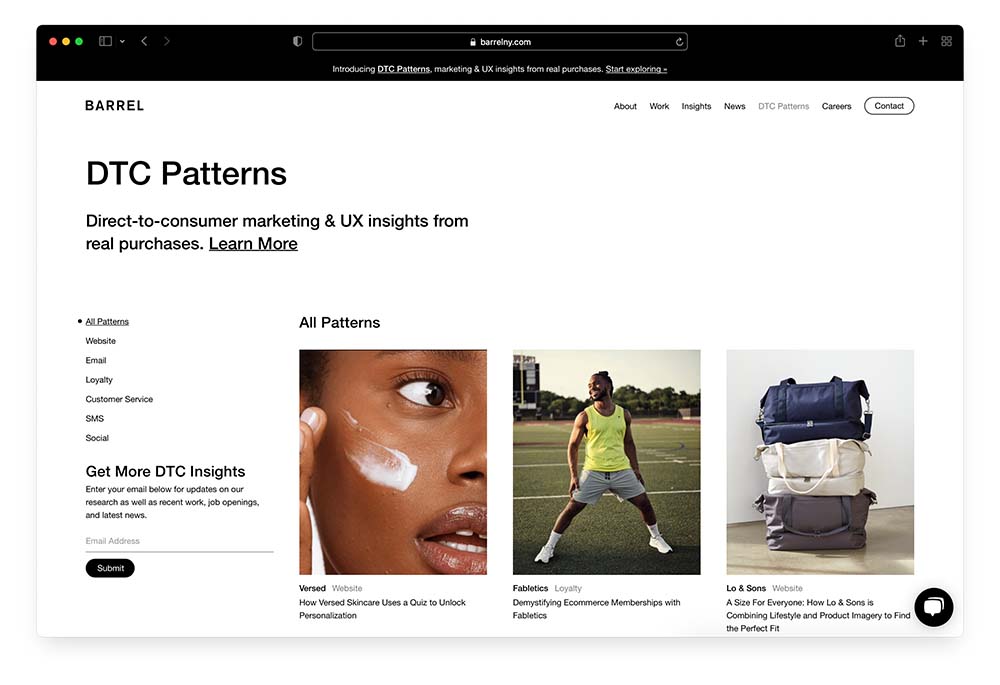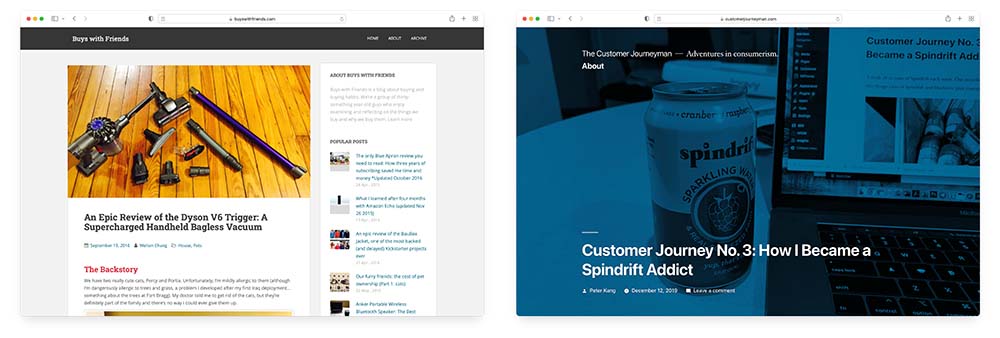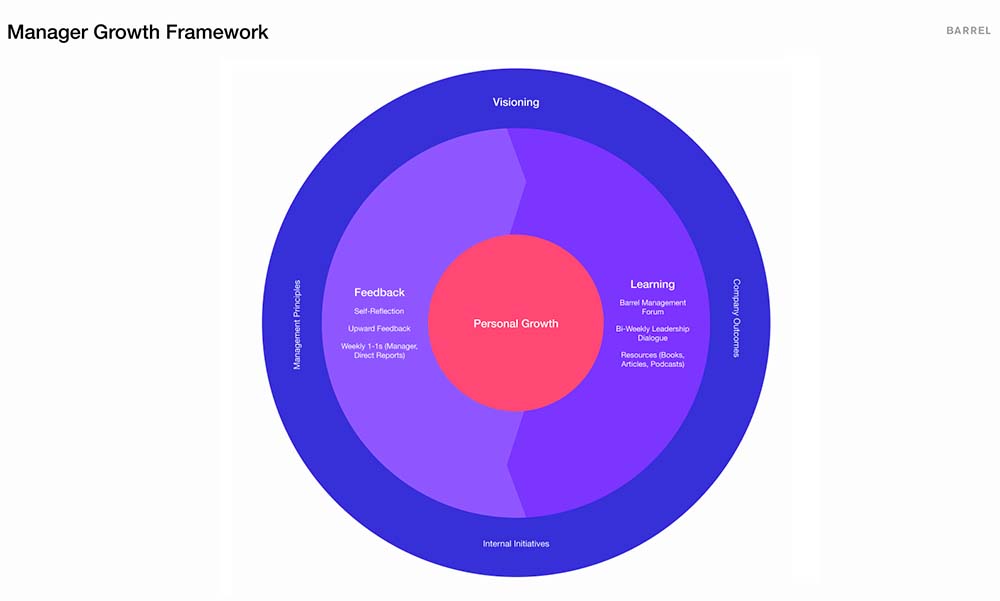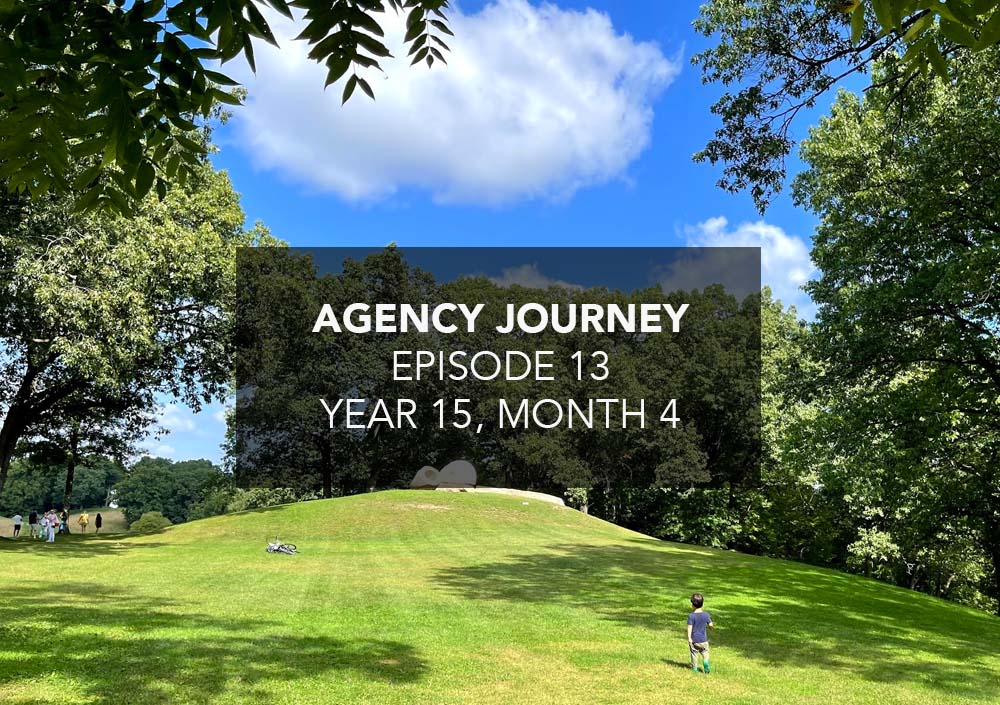The Unstoppable Force of Adaptation
I sometimes find it frightening to realize how quickly we as humans adapt to new situations and take for granted or get used to situations that, just days or weeks ago, seemed out of reach or a very remote possibility. This goes for good things, unfortunate things, and everything in between. We are adaptation machines.
We’ve been making a great deal of progress on many fronts at Barrel. We are hiring, building processes, and improving systems at an unprecedented pace. It felt amazing and exciting for all of two days before we started to see this as the new norm and wanted to push harder and demand more of ourselves, nitpicking and feeling dissatisfied at shortcomings.
Pausing to celebrate wins and to reflect with gratitude has been one way to snap out of our incessant adaptation. I sometimes flip back to our weekly Partners meeting notes from 12 and 24 months ago to remind ourselves of how far we’ve come. But such breaks are fleeting, and it’s back to growing, evolving, and adapting. This is not a complaint, just an observation.
For me personally, the opportunity is to slow things down, to draw out the moments of gratitude, and to be deliberate about the pace and the ways in which we’re changing as an organization. This in itself will require adaptation–the ability to overcome the lure of emails and instant messages throughout the day, the dopamine hit of solving immediate problems, and building the resolve to focus and embrace quiet moments of thinking and writing. The endless battle of modern life.
About Agency Journey: This is a monthly series detailing the happenings of my agency Barrel, founded in 2006. You can find previous episodes here.
Highlights
DTC Patterns
We launched a project near and dear to me this month. DTC Patterns is a gallery of direct-to-consumer marketing and UX insights gathered from real purchases made by Barrel team members. We publish short posts that showcase interesting interaction “patterns” that we pick up during a user’s purchase path. The goal is to make this into a valuable resource and library for brand founders, marketers, designers, and investors. We hope DTC Patterns drives quality traffic to the Barrel website which in turn can increase our new client leads as well as applicants to open job positions.

I’m super proud of the work our team did on DTC Patterns, our gallery of marketing & UX insights from real purchases.
The genesis of DTC Patterns goes back to a few personal projects that have shaped my thinking on content. Some years ago, a couple of my friends and I started a website called Buys with Friends, a blog where we wrote about stuff we bought and different considerations about the product, its usage, and its impact on our lives. It was a side hustle where our ambitions were to make a few bucks from affiliate revenue, mostly links that led to Amazon. Our most popular posts included an exhaustive review of Blue Apron, the meal delivery service, a Dyson vacuum cleaner, a Japanese men’s hair wax pomade, and various items for pet cats.
In running this blog, I became increasingly fascinated by the purchase process. When did we feel like it was the right time to buy something, where did we begin to look, what signals did we look for when buying, and what steps did we take to buy? I enjoyed thinking about these customer journeys from the perspective of Jobs to Be Done – what job were we as customers hiring these products to do? What progress were we looking to make in our lives?

Two personal projects inspired DTC Patterns – Buys with Friends and Customer Journeyman.
I took things a step further with another blog called Customer Journeyman. While I only published 3 blog posts in total (one on AllBirds, one on a local wine store, and one one Spindrift), I wrote at length about the purchase process and examined my own motivations as a customer.
Buys with Friends eventually fizzled out and I haven’t touched Customer Journeyman in a while, but the idea of buying stuff and writing about them never left my mind. And so when we decided to lean harder into our DTC ecommerce positioning at Barrel, I wondered if there was an opportunity to revisit the idea and to make it a more sustainable and interesting type of content.
After prototyping and collaborating with team members, the concept we landed on was this: allot $500/month for our team to buy things from different brands, let them document interesting marketing and UX interactions, and publish short posts that highlight these “patterns” eventually building up a large well tagged/categorized collection that can come in handy for people looking for inspiration.
We launched with 20 posts and the reception has been very positive. The goal is to publish at least 10 new posts per month. The team members who’ve participated have told me that the process of buying and being on the lookout for interesting patterns has been a great learning experience. We’ve been able to take some of the learnings to our clients as reference on their projects.
It’s funny how sometimes an idea needs to go through multiple iterations before it solidifies into something. That’s not to say that DTC Patterns is the final form–I’m sure it, too, will go through iterations sand evolutions in the coming months as we learn more about what our audience values.
Manager Growth Framework
Becoming a manager at Barrel has been, for most of our history, an organic affair. A good case in point is our Chief Experience Officer Lucas Ballasy, who, over 8 years ago, joined Barrel as a designer and made immediate impact with his enthusiasm, creative skills, and smoothness with clients. He was also great with team members, quickly establishing himself as a mentor and reliable go-to for not only other designers but Barrel employees in general. We recognized his people skills and before long, we promoted him, first to Senior Designer, then to Associate Creative Director, and then to Creative Director.
Along the way, there was little in the way of formal management training. We read some books together and figured things out as we went. Lucas was always game to experiment with new management approaches and different meeting formats. He was exposed to the entire cycle of management–hiring, performance reviews, comp reviews, promotions, firing, etc. along with countless types of team and 1-on-1 conversations with interns, individual contributors, and other managers.
The challenge for Barrel is that not every employee, even those looking to become a manager, develops a passion and knack for management that Lucas did. And Lucas will surely admit that he, too, could’ve benefitted from some structured learning about management (just like Sei-Wook and I, too, would’ve saved years of hardship and “feeling stuck” had we taken the time to get some proper management training).
I wanted to share Lucas’s story because he’s also been the one leading our efforts to create a comprehensive management training program at Barrel. With this program, we hope to provide more robust support for our current managers through on-going training and coaching and will also invest in developing the next generation of managers at Barrel by providing career pathways for younger team members to develop the skills necessary to become effective in the role.
There are many parts to the program but the best way to visualize how they all come together is through a graphic Lucas created which we titled the Manager Growth Framework. This framework is the culmination of years of discussions around the management philosophy we want to espouse at Barrel.

The Manager Growth Framework is, at its core, all about creating the conditions to help our managers develop personally.
At its core, we believe a great manager is someone who cares deeply about personal growth and is capable of supporting and leading others by first taking care of their own development.
Development happens through Feedback (both giving and receiving) and Learning (practice and insights), perhaps two of the most impactful actions a manager can engage in on a daily basis. Visioning is about having clarity on what we’re working towards and ensuring they encompass the standards we set for ourselves (Management Principles), the priorities of the organization (Company Outcomes), and any projects that enhance our ability to better support the team (Internal Initiatives).
There’s much more to our management training program than what you see here, and I’m looking forward to sharing more as we roll them out to our team. Be sure to follow Lucas’s writings for more details about what we’re trying to do with people management, and more importantly, leadership development, at Barrel.
Top of Mind
Refocusing on Client Outcomes
In our pursuit of establishing clear positioning as “the DTC ecommerce agency”, we may have lost sight of a very important question: how are we helping our clients achieve their goals?
In our eagerness to streamline our services offering to reflect our positioning, I’ve noticed that we’ve defaulted very much to an inward focus on our processes and deliverables, optimizing for efficiency and smoothness versus impact. We’ve developed some slick sales tools to ask questions, select options, and quickly arrive at an estimate. This has been, for the most part, a net positive for our sales efforts. However, we may be missing opportunities to go deeper and understand true challenges our clients face and to put together more bespoke solutions that address their unique needs.
“Unique” of course is relative – for brands selling DTC ecomm, the outcomes all boil down to the same two things–more revenue, more profit–but the priority and combination of needs are what end up being unique to each brand.
I’m exploring ways to better frame an outcome-based approach to sales and account management, where we can equip our team with a playbook of value-add possibilities (i.e. potential projects) that speak to outcomes vs. the work (e.g. improve customer retention vs. create more email campaigns). As a team, the opportunity to embrace the outcomes perspective vs. the input/our work perspective can, I believe, improve the overall client experience and also shift our services to be about measurable results vs. hours spent on creating deliverables.
There’s nothing new in this idea and if I do a search in my Evernote, I’m bound to find results from every year going back to 2015 about this (“selling outcomes to clients”). But something has always limited us each time. My guess, reflecting with 20/20 hindsight, is that trying new things for clients (even if it’s the same type of work just framed differently) has bitten us in the past because the team wasn’t certain about what we were trying to do (most of the blame falls on me for the lack of clarity), we underestimated the time required to do the work, and the financial results weren’t great. What’s worse, we failed to incorporate our learnings and improve the process, abandoning the “outcomes” campaign altogether and going back to what we know: you need a website redesign, you need some email campaigns done, you need us to run your paid campaigns. Rather than continue tweaking and trying again, we’d stop and forget, until the next time I would have an “outcomes” epiphany. Doing the same thing over and over again while expecting different results–sounds like insanity, right?
This time around, I’ll be looking to take a different approach. Instead of jumping straight into designing bespoke services, the playbook approach I mentioned above will 1) become a training tool to get our team speaking the language of outcomes more naturally and frequently, 2) drive conversations with clients where we have sizable retainers and can leverage the hours we have to do mini-projects that drive results, giving us the opportunity to pitch ideas vs. executing solely on requests, and 3) put more focus on measuring the impact vs. tallying up hours spent creating things that may or may not work.
A reminder to myself, a direct appeal to my weakness of being lost in the nuances and complexities of topics: keep things simple, ship quickly, get feedback, iterate, and repeat often. No need to blow things up or develop some kind of bloated services strategy. I’m going to start with a small cheat sheet with a few clear examples and share them with the team, see if it nudges people towards an outcomes focus.
Shared with Partners
“I’ve always been amazed that even teams that embrace conflict and honest debate can still struggle with commitment. That’s because they fall short of arriving at specific agreements at the end of their discussions. Although they are sitting in the same room and speaking the same language, they often leave with different ideas about what was just decided. There is only one way I know to prevent this. At the end of every meeting, cohesive teams must take a few minutes to ensure that everyone sitting at the table is walking away with the same understanding about what has been agreed to and what they are committed to do.” (Patrick M. Lencioni, The Advantage)
I don’t think we do this enough and hence the feeling of having “too many meetings”. I need to be more disciplined here in carving out space at the end of every meeting to align on commitments and takeaways.
“Stress is a choice. Do you buy that? Some people have a hard time with the idea. They think it’s the people and events in our lives that stress us out—management, colleagues, customers, the boss, traffic, weather, market conditions—but it isn’t true. Yes, bad things happen: The economy sours, our business struggles, the stock market tumbles, jobs are lost, people around us don’t follow through, deadlines are missed, projects fail, good people leave. Life is full of these. But still, stress is a choice, because whatever the “trigger event,” we always choose our own response. We choose to react angrily. We choose to stuff our emotions and keep quiet. We choose to worry.” (John G. Miller, QBQ! The Question Behind the Question)
I agree with this whole-heartedly. It’s not a popular sentiment and if phrased insensitively, it will trigger many people. This is why I won’t go out of my way to share the thought, but I truly do believe the stress I feel is of my own making.
“An organization that is healthy will inevitably get smarter over time. That’s because people in a healthy organization, beginning with the leaders, learn from one another, identify critical issues, and recover quickly from mistakes. Without politics and confusion getting in their way, they cycle through problems and rally around solutions much faster than their dysfunctional and political rivals do. Moreover, they create environments in which employees do the same.” (Patrick M. Lencioni, The Advantage)
I’d like to think that we’re continuing to learn and that we’re not totally blind to critical issues. But I also know people are still afraid or hesitant to speak up and surface issues, so there’s clearly much more work to be done here.
“You make a new game when you declare that something is important. This is what you’re putting at stake, and it is what you’re holding yourself accountable to. When others commit to the game with you, they join you on the field.” (Steve Zaffron and Dave Logan, The Three Laws of Performance)
This is also about clarity and what a leader can do in providing the clarity as a rallying point for the team. I’d give myself a C- here because I don’t think I’m fully clear myself on what our game needs to be. I’m fairly certain I’m looking in the right places (e.g. helping clients achieve their goals, developing team members, etc.), but the messaging is still too loose and murky.
“Pleasure is about stimulating the senses. Happiness is found by being grateful for what I’ve got. Success is getting what I want. Fulfillment is giving what I’ve got.” (Keith J. Cunningham, The Road Less Stupid)
Love this quote.
